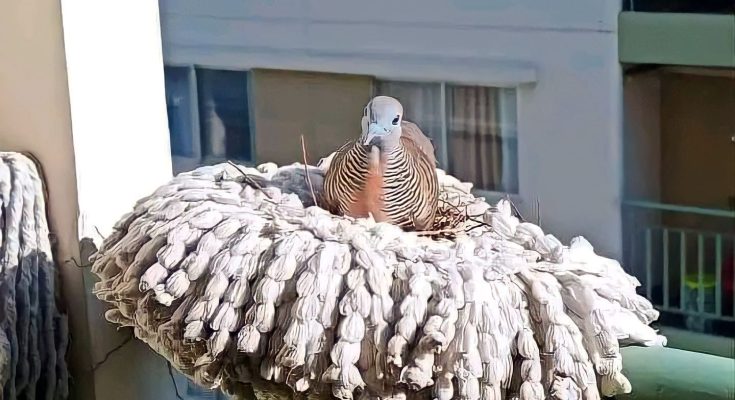Approved by the AOS Council 3 October 2023
The governing Council of the American Ornithological Society (AOS) announces three important commitments related to English common names of birds:
- The AOS commits to changing all English-language names of birds within its geographic jurisdiction that are named directly after people (eponyms), along with other names deemed offensive and exclusionary, focusing first on those species that occur primarily within the U.S. or Canada.
- The AOS commits to establishing a new committee to oversee the assignment of all English common names for species within the AOS’s jurisdiction; this committee will broaden participation by including a diverse representation of individuals with expertise in the social sciences, communications, ornithology, and taxonomy.
- The AOS commits to actively involving the public in the process of selecting new English bird names.
These momentous decisions have been made after careful consideration of recommendations by the AOS ad hoc English Bird Names Committee, which was tasked in 2022 with developing a process that would guide the AOS to change harmful and exclusionary English bird names in a thoughtful and proactive way for species within the society’s purview.
Why are bird names important? We use names to identify and communicate about bird species. Names help us connect with and talk about birds in a meaningful way. There are many considerations for what makes a good name. For example, stability is important to the usefulness of names; the longer a name has been in use, the more likely it will be remembered, recognized, and attributed correctly. If a name is derogatory or conjures ill feelings for people, however, it detracts from the focus, appreciation, or consideration of the birds themselves. The AOS Council is committed to addressing such potential barriers to engaging a wide and diverse set of audiences in our shared enjoyment and study of birds.
In the world of birds, people use two types of names to identify species. First, each species has a unique, two-part scientific name that by convention is in Latin. This scientific name is nested within the hierarchical naming system for all organisms that reflects their evolutionary relationships to each other, as currently understood by the experts who study them. Second, each species is also generally known by a vernacular, or common name, in whatever language is spoken in that area of the world. In North America, English common names of birds are used much more often than scientific names by members of the public and are thus extremely important for communicating in all matters involving birds, ranging from birdwatching, public engagement, and environmental education, to biodiversity conservation, public policy, and law.
The framework for assigning scientific names to animals is governed by the International Commission on Zoological Nomenclature (ICZN). This rigid set of rules, guided by the principle of stability, ensures that the names are globally unique and can be universally recognized (ICZN 1999). Unique scientific names enable clear discussions of the species being studied and can aid in the international efforts for their conservation during this current era of rapid loss of biodiversity (Winston 2018).
Unlike for scientific names, there is no single global list of universally accepted English common names for birds (Driver and Bond 2021). The responsibility for determining and standardizing the common names of birds varies in different parts of the world. The AOS (and previously its predecessor, the American Ornithologists’ Union) has long been recognized as the authority for registering species of birds found in North America, ever since it published its first Check-list of North American Birds in 1886 (AOU 1886, Winker 2022). To maintain this list, a team of experts reviews the scientific evidence for new or revised species and determines if proposed scientific and English common names are acceptable. The AOS follows the strict ICZN rules for assigning scientific names (AOU 1998) but has much greater latitude in determining the English common names of birds.
Each year, the AOS’s North American Classification Committee (NACC), composed of professionals with expertise in bird taxonomy and naming conventions, publishes an update to the Check-list of North American Birds (Chesser et al. 2023), which serves as a foundation for bird research, conservation, and education throughout the region. During the year, the committee considers specific proposals to revise species’ scientific names based on the latest research. Until recently, changes to English common names were mainly considered when necessitated by scientific evidence, such as newly described or revised species. In its decision-making, the committee has upheld the principle of stability as the primary criterion to ensure that bird species’ names are meaningful and understood by their users.
Recently the committee revised its Guidelines for English Bird Names (AOS NACC 2020) to allow changes to English bird names that were derogatory or offensive. These guidelines were expanded in response to a proposal (Chesser and Driver 2020) to change the English name of what is now known as the Thick-billed Longspur (Rhynchophanes mccownii), which had formerly been named after an individual with strong ties to the Confederacy and who is perceived today by many as a symbol of slavery and racism. The English name of this species was changed unanimously by the NACC to reflect the bird’s physical description and remove its association with a harmful historical figure (Chesser et al. 2021).
In 2020, reflecting the heightened awareness of systemic racism and the need to address these injustices across society, there was a public petition to the AOS to change all English bird names that were named directly after people (i.e. eponymous names) because several of the honored individuals are identified as symbols of racism and colonialism. The AOS initially approached this difficult issue through efforts led by members of the AOS Diversity and Inclusion Committee. This group engaged with various interest groups through listening sessions and hosting a Community Congress to bring together perspectives from across the ornithological community. There was broad recognition that all English bird names should be evaluated to determine if they align with principles of inclusion and social justice. However, the challenge has been in establishing criteria to determine which names are exclusionary, harmful, or offensive, or recognize historical figures who do not merit honoring and, therefore, should be changed (Winker 2022).
In 2022, the AOS ad hoc English Bird Names Committee was tasked with the considerable challenge of recommending the criteria for determining which bird names should be changed and how best to implement the process of changing them. After more than a year’s work and careful deliberation, the committee has produced a detailed report recommending that the best course of action would be to change all English names within the AOS’s jurisdiction that were named after people. The Committee acknowledged that some individuals for whom birds were named made valuable contributions to ornithology, but they ultimately considered a selective, case-by-case evaluation of whether an honorific name should be retained or replaced to be intractable. The AOS Council agrees with this assessment. Criteria for identifying which historical figures had done harm would be culturally influenced, leaving any attempted standardization inherently open to bias and disagreement. Any effort to make such judgments on past and present human figures would invariably be fraught with difficulty and negativity and become an unwelcome public and scientific distraction.
The committee also viewed the recommendation for changing eponymous English bird names as a tremendous positive opportunity to broaden participation in ornithology and bird conservation by involving the public in the process of choosing replacement names, and the AOS Council agrees. This project provides the AOS with an opportunity to align with its vision for a broad and engaged ornithological community that advances the understanding and conservation of birds.
The AOS, as the largest ornithological society in the Western Hemisphere, has long maintained authoritative checklists of birds for North, Central, and South America. To increase equity and make ornithology more inclusive, consistent with ongoing efforts to empower Latin American scientists (Ruelas Inzunza et al. 2023; Soares et al. 2023), the AOS will also work together with ornithological societies in Central and South America to determine what organizations would be the most appropriate stewards of English common names in these regions and will collaborate with these communities to move forward in ways aligned with their wishes. The AOS recognizes the importance of and commits to the inclusion of diverse perspectives in strengthening and bringing together communities united by common interests.
The AOS Council fully embraces this opportunity to remove exclusionary barriers to participation in the enjoyment of birds and, through the renaming process, to educate the public about the birds themselves, their recent population declines (Rosenberg et al. 2019), and their dire need for conservation. We are excited about our commitment not just to change harmful English names but also to develop a more inclusive process for identifying new names now and into the future. Our next step will be to launch a pilot to work out the logistics of undertaking this significant effort and find the best path to involving experts and the public. From this pilot, we will develop a thorough and effective process to launch our full campaign to change all North American eponymous bird names. We look forward to collaborating with our members, partners, and the public on this ground-breaking initiative.



